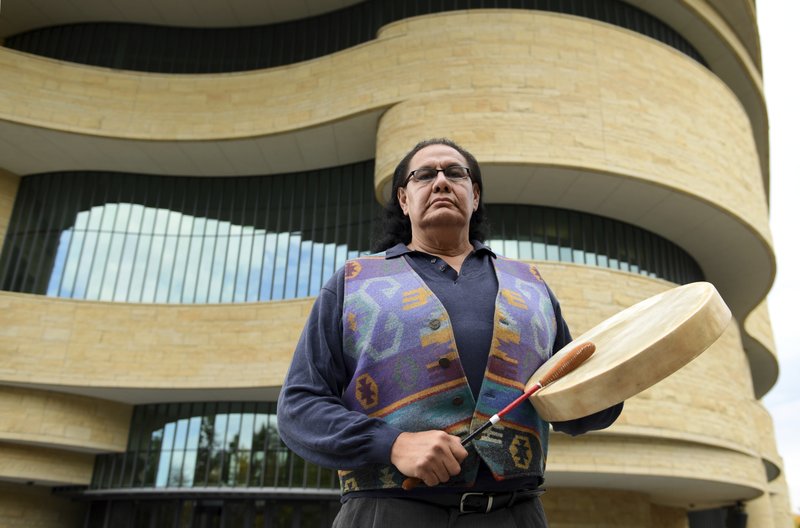FLAGSTAFF, Ariz. -- American Indians, as the ethnic group with the highest military-service rate and an enduring regard for warriors, have a unique perspective on the debate over "taking a knee" during the national anthem to protest social injustice.
Supporters of the movement say it's not intended as a criticism of the military. But such a protest would be unthinkable for many at tribal events because the flag and veterans are so deeply intertwined -- and revered.
"I'll stand. I'll do whatever I think is appropriate to honor them first, and then over there, I can debate about whether the country is living up to its side of the deal when it comes to treaty rights, water rights, social issues that affect a lot of the tribes," said Erny Zah, a singer, powwow emcee and dancer from the Navajo Nation in the Southwest. "Very rarely do I hear anything that negates the veterans' services, or the country's disparagement of whatever social issues might be happening at the time."
American Indians have served in the U.S. military at higher rates per capita than any other ethnic group despite a history of suffering at the hands of Europeans, and even in times when they were denied U.S. citizenship and the right to vote. Serving in the military and protecting one's homeland is considered a continuation of warrior traditions.
Many tribes even have their own national anthems known as flag songs that focus on veterans. They're popular among Plains tribes from which the modern powwow originated, said Dennis Zotigh of the Smithsonian National Museum of the American Indian. Powwows are social gatherings, generally with competitive dancing.
Other tribes including the Lumbee, Eastern Cherokee, Mohegan and Pequot on the East Coast, and Cochiti, Jemez and Taos pueblos in the Southwest also composed their own flag songs, telling their stories and admiration for the U.S. flag, Zotigh said.
The reverence on display is almost sacred, he said. Warriors are blessed through ceremonies before they encounter enemies, and welcomed back with parades, giveaways, eagle feathers, cleansing ceremonies and songs. Powwows often have a grand entry solely for veterans, who line up and can take hours to introduce themselves by name, military affiliation and years served.
America's 567 federally recognized tribes are considered sovereign -- nations within but separate from the U.S. and states, with the right to govern themselves.
William Runsabove, a singer and enrolled member of the Northern Cheyenne tribe of Montana, said the pride American Indian veterans have for serving the U.S. eclipses any feelings about the U.S. president, politics or social injustice.
"You can't take away from pride a Native American has for service," he said. "And, of course, the tough times ... a big percentage of people aren't happy with the way things are going now, but you can't take away that pride."
A Section on 11/26/2017
